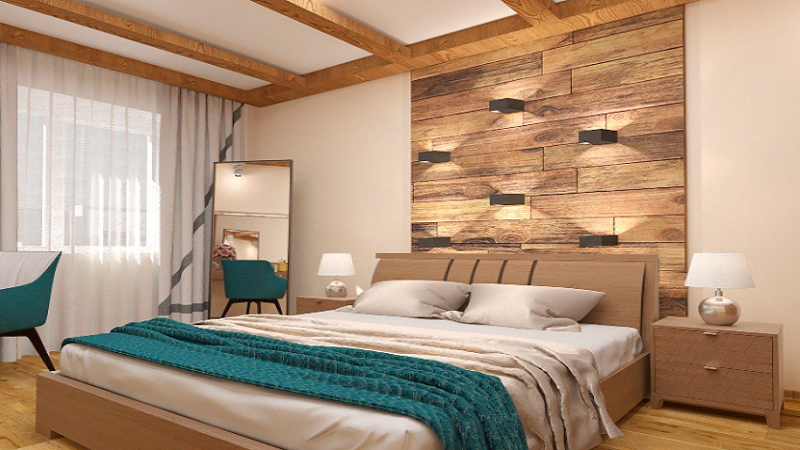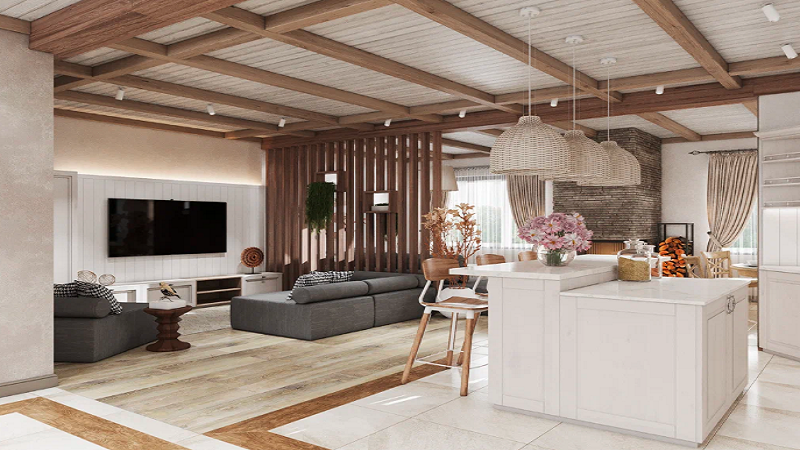Interior design transcends mere decoration, transforming spaces into reflections of personal taste, artistic expression, and functionality. When approached with an artistic eye, interior design becomes an immersive experience that captivates and inspires. This article explores how to craft interior design as art, emphasising how to achieve stylish and modern looks, forbidden techniques and common pitfalls to avoid, and the styles to use for seamless blending. Throughout, we’ll refer to the insights and expertise of London interior designers, known for their avant-garde and refined aesthetic
The Art of Interior Design
Embracing Interior Design as Art
Interior design is not just about placing furniture in a room; it’s about creating a cohesive environment that evokes emotion and tells a story. Like any art form, it involves creativity, balance, and attention to detail. London interior designers often approach projects with the mindset of an artist, viewing each space as a blank canvas ready to be transformed into a masterpiece.
Elements of Stylish and Modern Design
To achieve a stylish and modern interior, several key elements must be considered
- Minimalism and Functionality: Modern design often emphasises simplicity and practicality. This doesn’t mean spaces are stark or boring; rather, every element serves a purpose and contributes to the overall aesthetic. London interior designers excel at integrating functionality with minimalist beauty, ensuring spaces are both livable and visually appealing.
- Neutral Palettes with Bold Accents: A modern colour palette typically includes neutral tones like whites, greys, and blacks, accented with bold pops of colour. This approach creates a clean, sophisticated look while allowing for personal expression through vibrant artwork, textiles, or furniture.
- Natural Materials and Textures: Incorporating natural materials such as wood, stone, and metal adds texture and warmth to modern interiors. These materials bring a sense of earthiness and authenticity, essential for creating an inviting and timeless space.
- Technological Integration: Modern interiors seamlessly integrate technology, from smart home systems to sleek, hidden appliances. This integration enhances functionality without detracting from the design’s aesthetic.
Forbidden Techniques and Common Pitfalls
Overcrowding and Clutter
One of the most common mistakes in interior design is overcrowding a space. Clutter not only detracts from the visual appeal but also disrupts the flow and functionality of a room. London interior designers often emphasise the importance of negative space, ensuring there is enough room for each element to breathe and be appreciated.
Ignoring Scale and Proportion
Furniture and decor must be in proportion to the space they occupy. Oversized furniture can make a room feel cramped, while undersized pieces may seem out of place. Understanding the scale is crucial for creating a harmonious environment. London interior designers are adept at selecting pieces that complement the room’s dimensions and architecture.
Lack of Cohesiveness
A lack of cohesiveness can result from mixing too many styles or not having a clear design vision. While eclectic designs can be beautiful, they require a unifying element to tie them together. London interior designers often use a consistent colour scheme, theme, or motif to ensure different elements work together seamlessly.
Overlooking Lighting
Lighting is a fundamental aspect of interior design that is often overlooked. Proper lighting enhances the mood, functionality, and aesthetic of a space. Avoid relying solely on overhead lighting; instead, incorporate a mix of ambient, task, and accent lighting to create a balanced and inviting atmosphere. London interior designers frequently use lighting as a tool to highlight architectural features and create focal points within a room.
Styles to Use and How to Blend Seamlessly
Scandinavian Style
Scandinavian design is known for its simplicity, functionality, and connection to nature. This style features clean lines, neutral colours, and natural materials, making it perfect for modern interiors. To blend Scandinavian elements seamlessly:
Stick to a Neutral Palette: Use whites, greys, and natural wood tones as the foundation, with occasional accents of muted colours.
Emphasise Functionality: Choose furniture and decor that are both beautiful and practical.
Incorporate Nature: Bring the outdoors in with plants, natural light, and materials like wood and stone.
Industrial Style
Industrial design celebrates raw, unfinished elements and a utilitarian aesthetic. It’s characterised by exposed brick, metal, and concrete surfaces. To blend industrial elements seamlessly:
Balance Raw and Refined: Combine industrial features with softer, more refined pieces to avoid a cold or harsh look.
Use a Monochromatic Palette: Stick to blacks, greys, and neutrals, using textures and materials to add interest.
Highlight Architectural Features: Expose beams, ducts, and brickwork to add character and authenticity.

Mid-Century Modern Style
Mid-century modern design is timeless and elegant, with clean lines, organic curves, and a focus on functionality. To blend mid-century modern elements seamlessly:
Select Iconic Furniture: Choose pieces with sleek lines and organic shapes, such as the Eames lounge chair or the Noguchi coffee table.
Incorporate Bold Colors and Patterns: Use vibrant colours and geometric patterns as accents.
Mix Materials: Combine wood, metal, and plastic to create a dynamic and balanced look.
Bohemian Style
Bohemian design is eclectic, colourful, and full of personality. It embraces a mix of cultures, patterns, and textures. To blend bohemian elements seamlessly:
Use Rich Textiles: Layer rugs, throws, and cushions in various patterns and colours.
Incorporate Vintage and Handmade Items: Add character with unique, one-of-a-kind pieces.
Embrace a Relaxed Atmosphere: Create a cozy, lived-in feel with plenty of plants, artwork, and personal mementos.
The Expertise of London Interior Designers
London interior designers are renowned for their ability to blend styles seamlessly, creating spaces that are both stylish and functional. Their expertise in understanding and implementing design principles ensures that every element works together harmoniously. Here are some insights from their approach:
Attention to Detail
London interior designers pay meticulous attention to detail, ensuring that every aspect of a design contributes to the overall aesthetic. From the choice of materials to the placement of furniture, nothing is left to chance. This level of detail ensures a polished and cohesive look.
Balancing Creativity and Practicality
While creativity is at the heart of interior design, practicality cannot be overlooked. London interior designers excel at finding the balance between artistic expression and everyday functionality. They create spaces that are not only beautiful but also comfortable and practical for daily living.
Embracing Sustainability
Sustainability is a growing trend in interior design, and London interior designers are at the forefront of this movement. They prioritise eco-friendly materials, energy-efficient technologies, and sustainable practices, creating spaces that are as kind to the environment as they are to the eyes.
Customisation and Personalization
Personalisation is key to making a space feel truly unique and reflective of the homeowner’s personality. London interior designers often work closely with clients to incorporate personal touches and customised elements, ensuring the final design is a perfect match for the client’s tastes and lifestyle.
Crafting interior design as art involves a deep understanding of design principles, an eye for detail, and a commitment to creating spaces that are both beautiful and functional. By embracing modern design elements, avoiding common pitfalls, and blending styles seamlessly, anyone can transform their home into a stylish and inviting sanctuary. The expertise of London interior designers serves as an invaluable guide, offering insights and inspiration to elevate interior design to an art form. Whether you’re starting from scratch or looking to refresh your space, approaching interior design with an artistic mindset will ensure your home is a true reflection of your personal style and creativity. Click here
